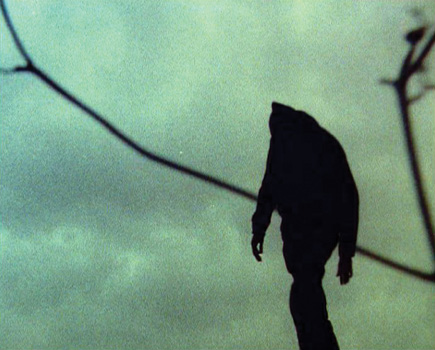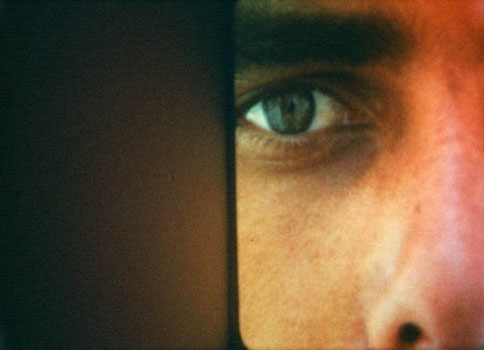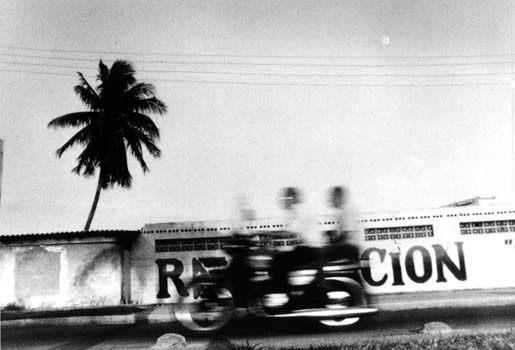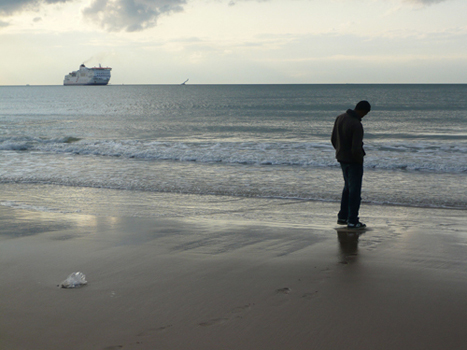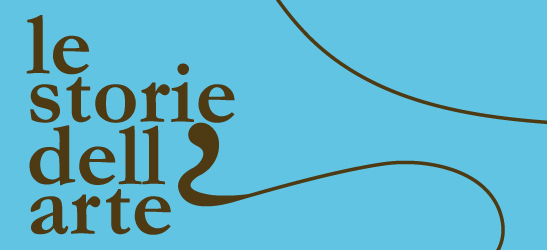christian boltanski, no man's land, 2010
(photo by james ewing, courtesy of park avenue armory)
I sat down with Christian Boltanski shortly before No Man’s Land, a site-specific intervention, opened at the Park Avenue Armory on New York City’s Upper East Side. By the time we met, most of the elements in the Drill Hall were roughly in place—the wall of characteristic biscuit tins, the clusters of used clothes, and the massive crane. Taken together, along with the heartbeat recording room, which I didn’t visit until a later return, the piece touches on questions familiar to those already acquainted with the artist’s work—memory, identity, loss, resurrection—and yet poses them in such a manner as to be accessible to those visitors for whom the name Christian Boltanski holds no preconceived meaning. In keeping with Boltanski’s desire not to have his work neatly labeled or categorized, but rather, engender its own visceral, emotional, and psychological reactions, I will refrain here from recounting the artist’s often-told biography. Instead, I believe that Boltanski’s words speak strongly for themselves.
Sarah Rosenbaum-Kranson: Can you describe the show that’s going on here now at the Armory, No Man’s Land?
CHRISTIAN BOLTANSKI: It’s a show—for me, it’s a little bit like a musical partition, and the first time was in Paris, at the Grand Palais [Personnes], and it will be here, and after that, it’s going to be in Milan [at the Hangar de Biccoca]. But each time it’s a different show, and each time it’s with a different object. When you have a partition, you can play for a big orchestra or a small orchestra. And because the space is so important in my work, especially for this piece, in Milan it will be totally different. With this kind of work and this kind of place, I think you must make some kind of collage. What I have said in Paris—and it’s sort of the same here—is that it’s like writing an opera, but the music is the space, and the music is already there, and you can write the story, but you have the music. And you can’t be against the music; you must work with the music. For this reason, I really change the work each time I show it. What is very important for me is that the people are inside the piece and not in front of the piece. In most of my work, it’s like that, but especially here, there will be sound, you are totally inside. And also, in a way, when the public is there, the visitors are walking, and they are mostly looking down, and they are not speaking, and they become a part of the work.

chistian boltanski, installation of personnes for monumenta 2010 at the grand palais, paris
Rosenbaum-Kranson: I was actually curious about some of the variations of the piece because I know one of the major differences, obviously, between this and Personnes is that in Paris it was the dead of winter, and here, we’re in the heart of spring.
BOLTANSKI: Sure, and that’s a big difference, and in a way, it’s a pity. In Paris, it was something more—it was very cold. I refused the heat, and it was terribly cold. I hope that the smell can be here, but I’m not sure that the clothes are going to smell. It’s important for me to work with cold, or to work with smell. When you are cold, you are inside the work. If it smells, you are inside the work. If it’s very noisy, you are inside the work. And it’s this idea of being inside the work that is important to me.
Rosenbaum-Kranson: Do you think the fact that we’re now in warmer months will actually end up heightening the smell?
BOLTANSKI: I hope so, but quite frankly you don’t feel anything, you don’t smell anything, and unfortunately, the clothes are clean!
Rosenbaum-Kranson: The clothing is too clean this time?
BOLTANSKI: I think so, unfortunately. I don’t know. But in any case, what is important for me is not for the visitors to say, “oh I love this” or “oh I don’t like that,” it’s to say what happened. If somebody arrives at one of my shows and says, “oh, he’s a good artist at the end of the twentieth century” or something, then that’s very bad. I would prefer someone to say, “I don’t know what happened,” “I don’t know if it’s art or not art, but I’m really touched.” And I hope for this kind of reaction because, in fact, I think this piece, especially this piece, is a very easy piece. It’s not intellectual at all. It’s something that everybody can receive and understand very well because it’s so simple. In all my work, from the beginning to now, there’s always this idea that used clothes are like a body. If you have lost your father, what are you going to do with his clothes? You know that the clothes belonged to the man, and you don’t know what to do with them. And also, the fact that we don’t know if we are going to survive until tomorrow, especially for people who are older—we are just walking, in a way, with mines, and the mines can go [makes sounds mimicking an explosion], and you see plenty of your friends dying, and you don’t know why you are not dead and if you’ll die tomorrow. This is something that everybody knows, more or less. But for me, it is important that there is something I want to say but also something that needs to be totally open. For the children, it’s a very funny piece because it’s colorful and you know the crane is like an amusement.

christian boltanski, no man's land, 2010
(photo by james ewing, courtesy of park avenue armory)
Rosenbaum-Kranson: Like getting toys out of an arcade game.
BOLTANSKI: That was my first idea for the piece. For this reason, I think everybody can take what he or she wants. But I’m sure here, in New York, a lot of people are going to think about the Holocaust, which is not impossible for me, but it’s not exactly what I think. And when I made the work in Paris, two days later, there was the earthquake in Haiti, and for me, it’s also about the earthquake in Haiti. But each one is within the piece, reading it how he or she wants to read it. For Jews here, it’s going to make them think about the Holocaust, but for people from Haiti, it’s going to make them think about the earthquake, and for a child, it’s going to make him or her think about toys. I accept all these interpretations.
Rosenbaum-Kranson: That’s what is so wonderful about presenting a work in a city like New York…
BOLTANSKI: Where there are so many people.
Rosenbaum-Kranson: Can you elaborate on your use of the crane?
BOLTANSKI: It’s like the finger of God. I think God is like us—when we walk in the forest, we do this [makes a gesture of squashing a bug], and we kill an insect. We are not against the insect—
we didn’t see the insect, but still we kill it. And God is blind—for me, God doesn’t care about us. And sometimes God takes us by chance. And that’s the idea of the piece. And also, the other idea is that you can see each coat, and you can hear the heartbeats, and that means there are people’s identities. But in the mountain [of clothes], there’s no more identity because you can’t see if it’s a jacket or coat—everything is mixed together.
Rosenbaum-Kranson: This brings up a number of questions. I guess I’ll start with this element of smell, of sound, the fact that you’re using clothing. There’s this sort of insinuation of touch as well. I was curious if you could talk about the layer of sensuality that has always been strongly present in your work.
christian boltanski, reserve: the dead swiss, 1990, 1,168 boxes and photographs
BOLTANSKI: These shows are bodies. And the bodies smell. There were a lot of people in my work—there were thousands in Dead Swiss—60,000 heartbeats. There are always a lot of people. One of the questions in my work is unicity and the big number. But in this case, here, in the Armory, we have something like 400,000 people, I suppose. And also, in fact, it’s strange because I don’t speak directly about the Holocaust, but one of my questions about the Holocaust is the numbers. It’s easy for me to imagine one thousand people, but it’s totally impossible for me to imagine six million people. And the idea of the big number is something that’s so strange. And also, the survivors, after the Holocaust, always had guilt—why did I survive? Why didn’t God kill me? And also, why do I survive and why does my friend die? It’s not directly about the Holocaust, but it’s around the Holocaust, you could say. But it’s true that there are a lot of people, and I think the only question that’s in all my work is that I believe that everybody is unique, and at the same time, everybody is so fragile. After three generations, nobody is going to remember me or you. We remember the grandfather, but we can’t remember the great-grandfather. And it’s something so strange because everybody is so important; all of us are absolutely important and at the same time so fragile.
Rosenbaum-Kranson: That idea of individuality as well as the connections between people is something that comes up a lot, for me, in your work, where there’s this element of the individual pieces but also the group. When you walk into the Drill Hall, you have this mammoth pile of clothing, which, on the one hand, is one large piece, but then, of course, it’s all these individual little bits together.
BOLTANSKI: Yes, it’s plenty of people. It’s one piece made by thousands and thousands of people. It’s the mountain, and at the same time, it’s 400,000 people. But they are no longer somebody because they are destroyed, they have no more identity.
Rosenbaum-Kranson: I was speaking to Lawrence Weiner about his manhole cover project downtown, and I made the mistake of referring to them as modest because, from my perspective, when you’re just walking there, they’re inserted into the ground, and you can easily overlook them. But he adamantly corrected me and said they’re not modest, they’re nineteen manhole covers which each weigh three hundred pounds. But that idea, that connection between monumentality, modesty, and intimacy, is something that I’ve been thinking a lot about with your work as well.
BOLTANSKI: I think one of the differences between us is that Lawrence Weiner is the last Jewish artist we have, and I’m more Christian. I said that one time to Lawrence, and he did not agree. But I am totally sure that he is the last Jewish artist, because he exhibits stories—there’s always question and question and question in Lawrence’s work. And the fact that he refuses to use images and only uses words is also from the Jewish tradition.
Rosenbaum-Kranson: You created a work about fifteen years ago in New York that also used recycled clothing, Dispersion, at the Church of the Intercession in Harlem. It was part of a larger four-site installation called “Lost: New York Projects.” For Dispersion, visitors could actually leave with the clothes.
BOLTANSKI: At the church, it was possible to buy a bag for two dollars and fill the bag with clothes. I decided to do that here at the end of the show, but the location is a little difficult. We are on Park Avenue, and it’s too rich. For me, what was important was that I believe in the resurrection. It’s like if you go to the flea market, and if you see that there is a jacket on the floor, and somebody had loved the jacket before, somebody chose it, but this person is dead or this person doesn’t like this jacket anymore—and I mean to say, “I love you, I take you.” And for this reason, I’m going to give a second life to the jacket. The jacket is going to travel with me, and I’m going to say, “oh, you are so beautiful,” and I believe that what is important for an object or for a person is to look at it and give some love. And if you give some love, you give life. And all these clothes in No Man’s Land are dead clothes. But if somebody says “you are mine,” a new life will begin. And that’s the reason I did that in the church with Tom Eccles [Curator and former Director of the Public Art Fund]. And here, I thought it would be good to finish the work, to say it’s not dead, there’s the possibility that these clothes are going to survive, but Rebecca Robertson, [President/CEO of the Park Avenue Armory] and Tom said we are on Park Avenue, and it’s a little difficult.
Rosenbaum-Kranson: I think this idea of recycling and resurrection is a really beautiful one—that things can be brought back.
BOLTANSKI: In fact, here, all these clothes are going to go back to the man who lent the clothes.
christian boltanski, no man's land, 2010
(photo by james ewing, courtesy of park avenue armory)
Rosenbaum-Kranson: Where do you get thirty tons of clothes?
BOLTANSKI: In New Jersey. Do you want to know something funny? There are too many clothes now. The man who lent the clothes is working with one hundred tons of clothes per day, and there’s the big problem of how to destroy them. Now people don’t keep their clothes; clothes are less expensive and are not good quality, and after three months, they just throw them away. A few of them go to Africa, perhaps ten percent or something like that, and most of the clothes are going to become felt.
Rosenbaum-Kranson: One of the other things I’ve been thinking about is that you work with material that’s being recycled, but then, the installation as a whole, you can also see as being recycled. You revisit earlier pieces.
BOLTANSKI: Yes, especially for me, I have very few ideas in my life. And I hope with each piece it’s the same ideas. One chooses to be a painter, like I did, or a fashion designer. When you are a fashion designer, you must have a lot of ideas; when you are a painter, you must have one idea. And in fact, very often—I think, a little bit for me, and I think for most artists—there is a problem at the beginning of life, very often a psychological problem but also a historical problem, and for your whole life, you try to speak about this problem. If you think about Louise Bourgeois, she had this problem with her father, and all her art has to speak to that. We never find the solution, but it helps to have to speak about this problem. My problem was more historical than psychological, but I’m always trying to understand. We have a question, and all our lives, we try to understand why.
Rosenbaum-Kranson: Going back to the heartbeats that you mentioned earlier, you started collecting them in 2005, and I was wondering if you could speak a little about the connection between them and the other materials you use.
BOLTANSKI: For me, used clothes, a photograph of somebody, or heartbeats are the same thing. It’s always some kind of an object which represents that the subject is missing. In fact, the first idea was a little bit like a joke—I made a piece, I think, five years ago with my own heartbeats, and I thought this time it would be good not to have a photo album, but a heartbeats album, that it would be possible to go home and say, oh, I’m going to hear my grandmother tonight. And after that, I decided to collect heartbeats. But, in fact, people are not going to survive with this, it’s going to show absence. If you go to this island in Japan [Boltanski’s heartbeat recordings are archived on Teshima Island in Japan’s Inland Sea], and if you hear the heartbeats of your grandmother, your grandmother’s going to be very dead, and she’s going to be more dead because you hear these heartbeats, and it is going to show you more that she’s absent. In fact, it’s like when you see a photo of somebody, you feel more that this person is dead.
Rosenbaum-Kranson: The secondary presence makes you feel the absence even stronger.
BOLTANSKI: Yes, and this island of Teshima is going to be the island of the dead, of the dead people, because all these heartbeats are going to be heartbeats of dead people in a few years.
christian boltanski, view of teshima island, japan, repository for “the heart archives”, 2005-2010, japan seto inland sea
Rosenbaum-Kranson: How did you start working with this island?
BOLTANSKI: I did a very large piece in the north of Japan in an old school which is no longer in use because there are no more children in this part of Japan. And I created a very large work inside— it’s, I don’t know, two thousand square meters. The man who paid for this, Mr. Fukutake, is the director of the Naoshima Fukutake Art Museum Foundation in the south of Japan, and now he wanted to make some other art around Naoshima, and he asked me to think about a project. And I thought it was a good place to put my heartbeats–what is important is to make the struggle. It is to go to this island—and it is very difficult to go there—and during the travel, you can think about the person whose heartbeat you are going to hear. It’s not to hear most of the heartbeats, which mostly are the same, but what is important is to think about the person, and to know that the heartbeat of your grandmother is there, or your own heartbeat is there.
Rosenbaum-Kranson: So you know that you actually can do it.
BOLTANSKI: It’s not only a dream, it’s reality. And this year, I put a speaking clock under the Cathedral of Salzburg. And you have the crypt, you go to the catacombs, you go the crypt, and you can hear the time day and night, and it’s impossible to stop. And for me, it was very important, because, for me, one of the images of God is a lot of time. It was important for me to see the bishop, who was a very conservative bishop, and to explain that I needed his place, and after, I don’t know, one year, he accepted. And it’s a reality—you can go to Salzburg, you can go to the cathedral, you can go to the crypt, and you can hear the time. Now I work with this man in Tasmania, and it’s also a reality. Do you know the story of Tasmania?
Rosenbaum-Kranson: No. Can you explain it?
BOLTANSKI: That’s a strange project. I know a man who lives in Tasmania, David Walsh, and he wins a lot of money in casinos—he plays all the time. He’s a very strange man, and he collects a lot of things, especially Egyptian mummies. And he wants to make a foundation in Tasmania, and asked me, because we have a friend in common, if he can buy a piece of mine. And I decided to play with him. And first, my studio is filmed day and night, until I die, and it’s sent, through video-conference, indirectly to Tasmania. But only after I am dead can he make something of it. And also, what is funny for me is that he’s a gambler, and the piece has a price, and I ask him to pay me every month until I die—we call that in French viagé. If you sell a house in France, you can sell it like that: you don’t ask for the money, but the man who buys the house must pay you a little money every month until you die. And in eight year’s time, David Walsh is going to pay me what he asked to pay me if I asked for the money now. But he told me that he was sure that I’m going to die before eight years. Because you know he’s a gambler, if I survive ten years, he’s going to have lost money; if I die in four years, he’s made money. And he said, “I’ve never lost in my life, and I’m totally sure that you’re going to die before eight years.” And for me, it was very funny to do that because the man who believes that he is stronger than chance is a devil, because nobody is stronger than chance, only the devil.
Rosenbaum-Kranson: And how many years ago was this?
BOLTANSKI: It began this year. Also, for me, it was interesting to do that because in our society it’s totally impossible to speak about the fact that we are going to die. It’s something we totally refuse. We refuse to be older, and we refuse to die. And I hope to survive twenty years, but it’s very possible that I will die in five years. It’s normal to speak about that and not to refuse it.
Rosenbaum-Kranson: Reading through all of the interviews and essays on your work, there are two concepts that come up over and over—that you’re a trickster, on the one hand, and hyper-concerned with death, on the other. And that story, I think, really made me think about how they’re not necessarily opposed.
BOLTANSKI: It’s my last piece because my studio is going to be filmed until I die, and it’s going to be my last image of me. He wanted to buy my ashes, but I refused because I don’t like Tasmania at all—it’s too rainy. I don’t want to finish my life in Tasmania. But in any case, I think it’s a little parable. What I am doing, I think perhaps all my life, but especially now, are like little parables.
Rosenbaum-Kranson: You mentioned Lost: New York Projects earlier. That was also a very large intervention into Manhattan’s landscape, but very different from the single-site installation you have here with No Man’s Land.
BOLTANSKI: I like to work outside of galleries and museums. Because I’m an artist the only thing I can do is make art, but if you want to touch somebody, within five seconds they must not know it’s art but they must believe it’s life. For this reason I have shows in churches or garages because they’re much more interesting than art spaces. And also because, I think, if you are in a museum, people have the label “museum” and category “artist.” In fact, what was very difficult was that the city is so large that to go from the synagogue in Chinatown to the church in Harlem was such a long a trip that nobody had time to do that.
Rosenbaum-Kranson: So, the fact that the sites for Lost were so disparate made it too difficult for people to approach the work?
BOLTANSKI: Yeah, I think that Europe is different. I think at this time, the people who would go to see art in the States were more conservative, and they would always go to the same places, and it was very difficult for them to go to a place that they didn’t know.
Rosenbaum-Kranson: It was too difficult to break people’s routines?
BOLTANSKI: Yes, especially in such a big city. And I was happy because a lot of people saw it, but for the art scene, there were not so many people. It’s also like that in France. People always go to the same places. I just had an exhibition called "Après [After]" in a museum just outside of Paris, the MAC/VAL [Musée d’art contemporain du Val-de-Marne], and there were some people whom the director of this museum told me had never come here because they have to take the bus—you know, only twenty minutes—but they always go to the same place. Although what I loved in Lost: New York Projects, and what I’m also doing here, is that everything was destroyed after. I can say, I don’t know, seventy or eighty percent of my work is destroyed after, and I like this idea—you can see it, but afterwards there is nothing.
Rosenbaum-Kranson: Finding funding for the arts is increasingly difficult. It must be especially so when you don’t focus on selling objects.
BOLTANSKI: In any case, the Public Art Fund is something very important in the States because it is something really public, and I know that the money is private money, but it is something really for the public. In Europe, we have more things like that, but there is more public money and more possibility to do something without the idea of selling something. It’s less like that than it was before, but during the seventies and the eighties, there was a lot of money for making a show in a cave, in the mountains—it was possible to find this kind of money. And I think in the States it was much more difficult to find this kind of money. Also, the times have changed. I came to art just after ’68, and at this time, the idea of the market was not so important; the idea of the gallery was not so important. And, in a way, when I was young, all my friends had other jobs, and it was just normal. For this reason, to make projects without the idea of selling something was totally normal. And it seems to me that now the idea of the market is much stronger than it was at this time. I refuse to have permanent assistants or a permanent secretary, because I think assistants kill art. If I have two assistants, I must give them something to do, and if I have no idea, that means they must do something that I did already, and I must pay them, and this means I need to sell. And it becomes like a little factory, and I think that this is very dangerous. And for this reason—I am perhaps too romantic—I’m totally free. I can watch TV for three days, and nobody cares. And I think I’m very lucky for that, not to have to pay somebody, not to have to produce something.
Rosenbaum-Kranson: The money factor, especially with public art, is so strange because here, in the States, there’s so little money for the arts that whatever public art is produced usually is privately funded. And yet, because it’s in public spaces, so much of the controversy surrounding it tends to get stirred up by people who are offended that it’s their “tax dollars at work,” even though it’s usually not their tax dollars.
BOLTANSKI: The big difference now in Europe is that there’s less and less public money and more and more private money, like in America. And during the seventies, there was a lot of public money, and now there’s less public money. There’s always some, but it’s becoming less and less. And it’s nearly impossible now to make a show with only public money—you must mix.
Rosenbaum-Kranson: So, one final question. After everything we’ve talked about, and especially this idea of the work as the human body and all of the senses that you incorporate, have you ever thought about working with taste?
BOLTANSKI: Taste? No, I’ve never tried, I don’t know, [laughter] perhaps because I love to eat too much, and I don’t want to mix that? And also, perhaps, because eating is something more happy, and my work is not so happy.







